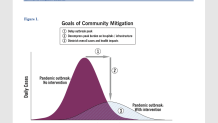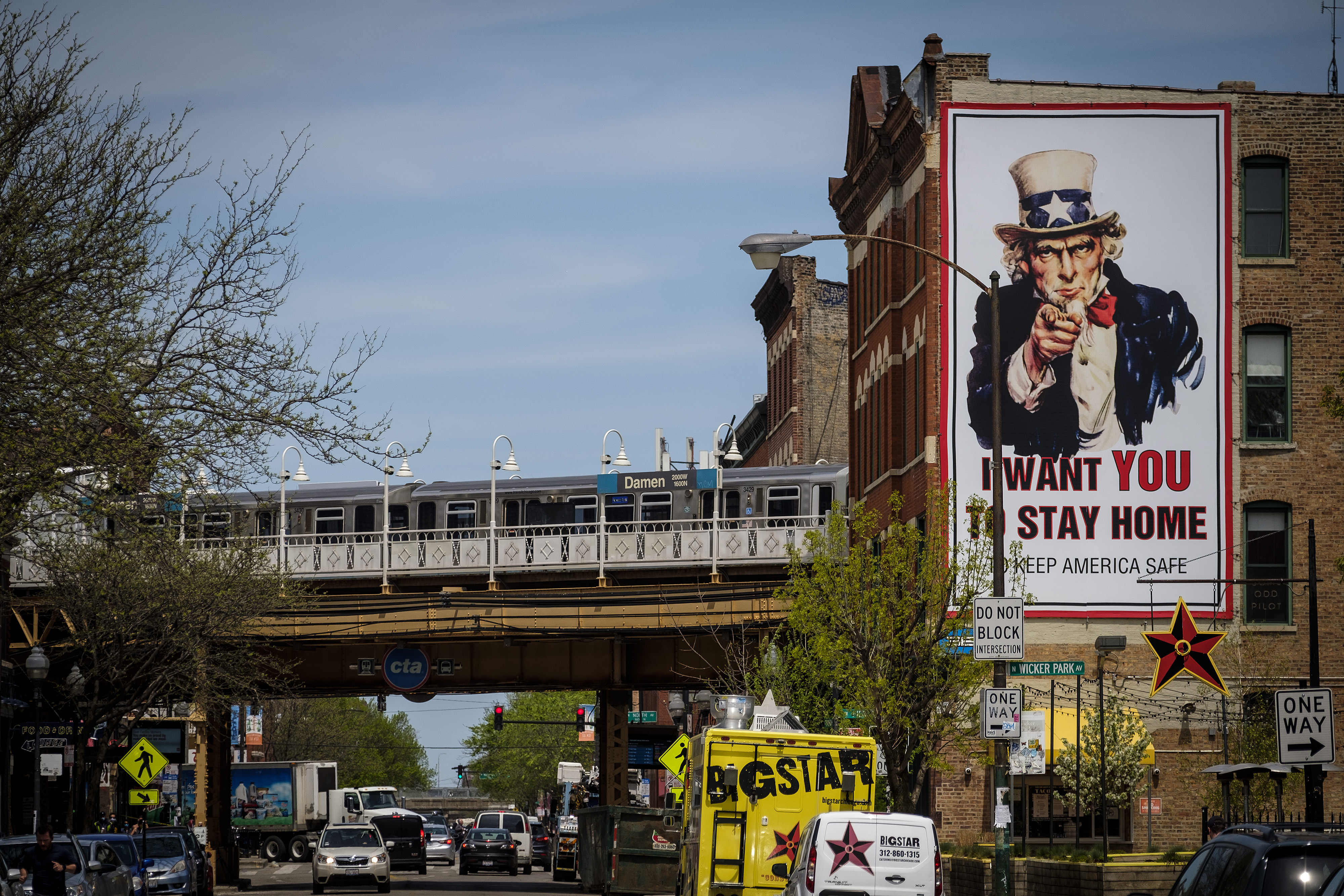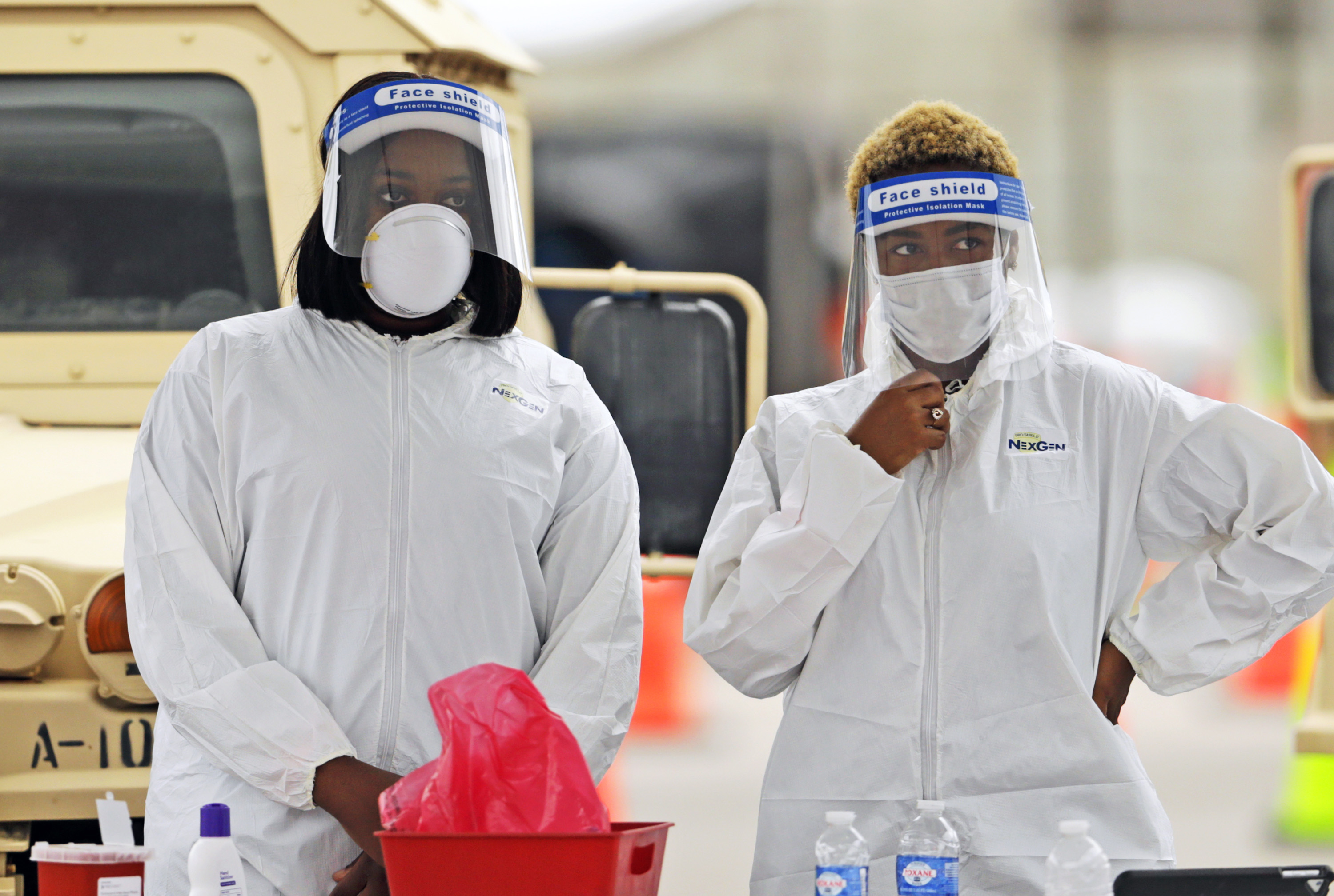Illinois is tracking a lot of data when it comes to the coronavirus outbreak, but one thing state health officials have repeatedly referred to is a date when the state will reach a peak.
But what does that mean?
A peak doesn't necessarily refer to the total number of cases statewide. Instead, it refers to the highest point multiple data sets hit before they begin to decline.
Those metrics, according to Gov. J.B. Pritzker and state health officials, also include positivity rates, hospitalization rates, and the number of patients on ventilators.
"Case numbers are less helpful," Pritzker said, noting that "the more you test, the more you find positive cases."
Pritzker said Monday that modeling shows Illinois likely won't hit its peak until potentially mid-June, later than initially expected.
The later peak means that efforts to mitigate the spread of the deadly virus are working to "flatten the curve," officials say.
“Compared to the forecasts I shared on April 23, the timeframe of plateauing near a peak has been expanded from mid-May into mid-June,” Pritzker said in his daily coronavirus briefing.
Illinois has currently reached what health officials called a "plateau," but numbers would need to decline for a peak to have been reached. Meanwhile, the state saw a record number of coronavirus cases in a 24-hour period Tuesday, with 4,014 new infections, lifting the state total over 83,000.
"The peak is that there is a top point. If we stay flat, there’s no top point, so in effect your highest point will be where the plateau is, and that’s what we want. That’s your highest number of cases, fatalities and hospitalizations," Illinois Department of Public Health Director Dr. Ngozi Ezike said Tuesday. "And from here we would go down. That would be a good thing."
"It’s hard to know if this is the top until we start going down," Ezike added. "We’re all hoping that we’re at the highest point, and that from here on we go down. Obviously we would rather stay flat for an extended period than to see this plateau and then go up."
The new timeline marked at least the second time Illinois officials publicly stated that the projected peak in cases had shifted later. At the outset of the pandemic's spread in Illinois, health officials initially predicted a peak in April. Then last month, Pritzker said the peak had moved to mid-May, before sharing the new timeline of as late as mid-June on Monday.
Pritzker said the state has made progress in slowing the spread of COVID-19, progress that, in flattening the curve of the virus, lengthens the amount of time during which numbers will plateau rather than decline.
“On a statewide basis, we haven’t passed our peak yet,” he said. “We’ve seen more stability in our numbers, but we’re not seeing significant declines in key metrics, including hospitalizations.”
Pritzker added that while the news of the potential peak not hitting until the middle of next month is "disheartening," he noted there is reason for optimism.
“This does signal success,” he said. “A pushing out of our estimated ‘peak’ is a natural consequence of flattening the curve. Pushing the peak down and therefore to a longer timeframe might not sound like good news, but I promise you, it is saving lives.”
Experts say the reasoning behind the effort to "flatten the curve" is to keep hospitals operating within their capacity. A later and lower peak means the cases are stretched out over time and don’t overwhelm the healthcare system, officials say - so more people can be treated and recover.

Pritzker said that hospitals around the state have sufficient capacity to handle COVID-19 cases thanks to social distancing efforts and the state's phased reopening plan under the stay-at-home order as the global scientific community works on creating a vaccine.
“Remember, you can’t stop this virus without a vaccine, so what we’ve been aiming to do since early March is slow down the exponential rate of transmission,” Pritzker said. “When we do that, it leads to a slower rate of infections over a larger period of time, giving our healthcare system the ability to treat those who have complications and giving our pharmaceutical researchers time to develop effective treatments and a vaccine.”
Pritzker said that the temptation may be there to ease restrictions by the end of May, but that doing so would jeopardize the progress that the state has made in fighting the spread of the virus.
“Lifting all of our mitigations at the end of May would likely lead to a second wave of outbreak in each and every one of the four regions,” he said.
He gave details on the hospitalization rates and other numbers the previous day, saying Illinois and its residents had prevented the worst case scenarios by staying home and taking other precautionary measures.



